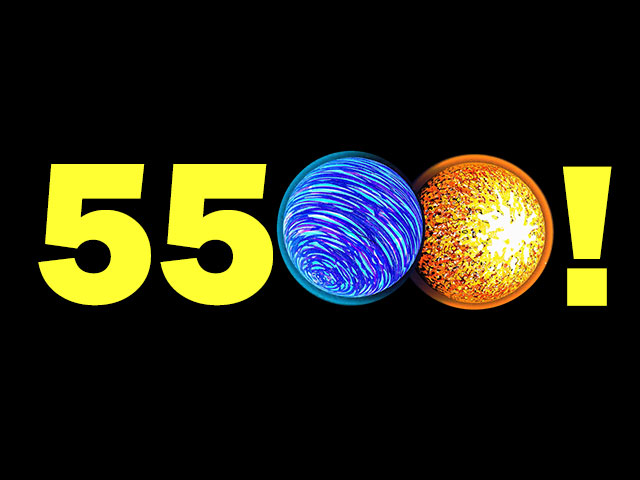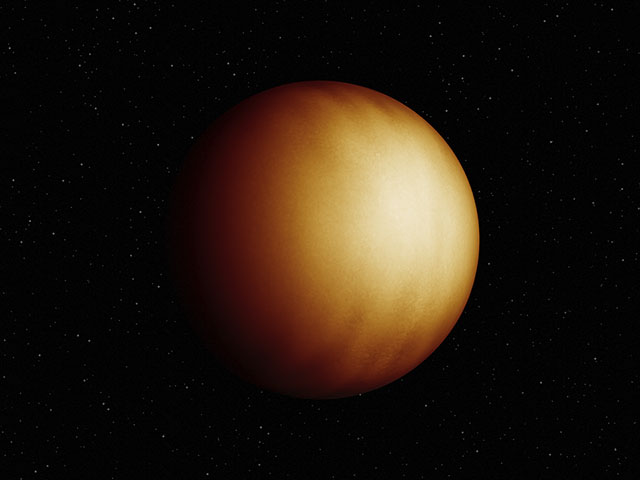News | September 22, 2013
Tamer in twos: Binary stars may be harbors for habitability

Orbiting each other at the right distance, binary stars can control each other's spin and reduce otherwise harmful radiation levels that could threaten life on a habitable exoplanet.
It’s a classic moment in sci-fi history: Luke Skywalker ponders his future as two blazing suns sink beneath the horizon of the desert planet Tatooine.
Astronomers have found exoplanets orbiting multiple stars before, but research from a team led by Paul Mason of New Mexico State University including researchers of the Universidad de Antioquia (Colombia) has found that life among binary stars, as envisioned in Star Wars, might be more feasible than originally thought.
In fact, being part of a stellar pair might help turn otherwise tempestuous and unruly stars into good hosts for Earth-like worlds.
Comprising some three-quarters of all the stars in the galaxy, red dwarfs are thought to be great places to search for Earth-size planets. Their small size and cool temperature may make it easier for astronomers to find planets that would otherwise be lost in the glare of larger stars.
But while red dwarfs may be small, they’re anything but demure. Red dwarfs appear to blast their planets with massive pulses of radiation, which over time can strip away planet atmospheres and cause life-sustaining liquid water to evaporate away.
A major reason for these outbursts is the fact that red dwarfs spin much more rapidly than larger and more languid stars like our sun. While the sun completes one rotation every month, red dwarfs take only a few days. “When a star spins quickly, it creates a magnetic field with a large corona - giving it a really powerful solar wind,” Mason said. And while stars rotate more slowly as they age, red dwarfs have incredibly long lifespans -- by the time they begin to relax, it may be too late for life to form in that solar system.
These findings have dampened some of astronomers’ enthusiasm that red dwarf stars may harbor a bonanza of Earth-like planets.
But there may be hope for the unruly red dwarf. Mason and his team have found that being part of a binary star system may tame some of these stars’ more destructive tendencies.
“When stars orbit closely to one another, their gravitational forces interact,” Mason said. “The tidal effect between two stars in a binary system can slow down a star that would otherwise be spinning too fast.”
This process can reign in an otherwise rapidly spinning star, an effect that Mason calls “premature aging.” In the period of just a few hundred million years, a dangerously active red dwarf star could “age” into a one much more accommodating to an Earth-like world. “The star’s not actually getting older, it just seems older, as its spin and radiation are reduced earlier in its lifetime.”
Even for larger stars, like our sun, being part of a binary system might be a boon for the formation of Earth-like worlds, reducing the amount of time the star spends as a rapidly-spinning, highly-radioactive youth and easing it more quickly into the relative quiescence of middle-age, giving potential habitable planets a chance of surviving with atmospheres and liquid water intact.
“The advantage to this setup is that you could have a wetter habitable zone with multiple planets in it than you’d see with a single star,” Mason said. “A planet like Venus, which is outside the habitable zone of our sun, might be more Earth-like in the right kind of binary system.”
Of course, Mason warns, not all binary stars are friendly places for Earth-like planets. “If the stars are too close together and have a period of less than ten days, they’ll keep spinning quickly and have a strong solar wind ... they’ll stay ‘forever young’ and that’s very bad for a habitable planet.
“And stars that are too far away from each other won’t affect each other’s spin, so the slowdown effect won’t happen.”
Still, the findings suggest new hope for the habitability of exoplanets orbiting otherwise hostile red dwarfs and tantalize with the possibility of a new and improved “Goldilocks zone” lurking around certain binary stars.
Mason’s findings were published under the title “Rotational Synchronization May Enhance Habitability for Circumbinary Planets: Kepler Binary Case Studies”. The paper can be viewed here:








